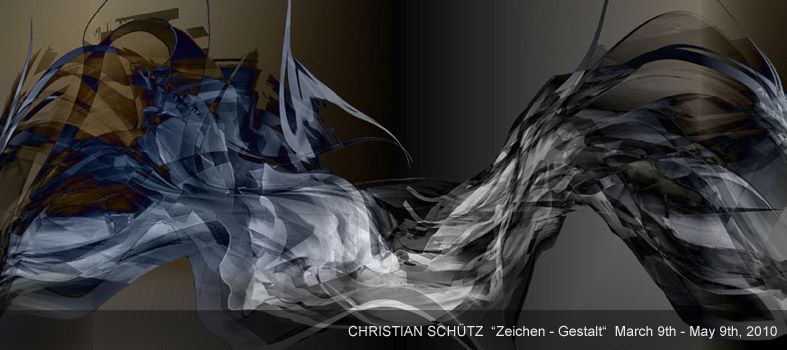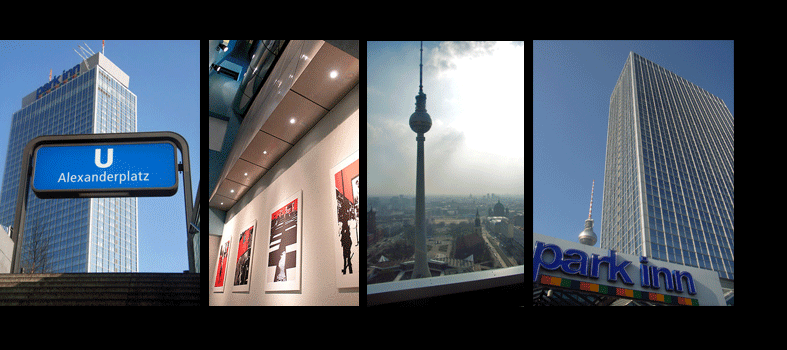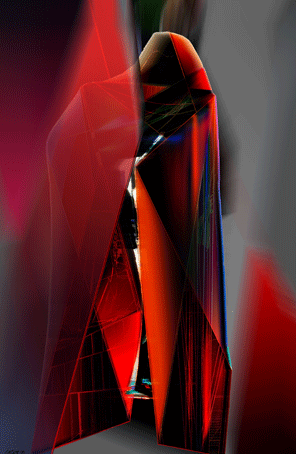
A-BA-Ch 63 from the series "Chaconne"
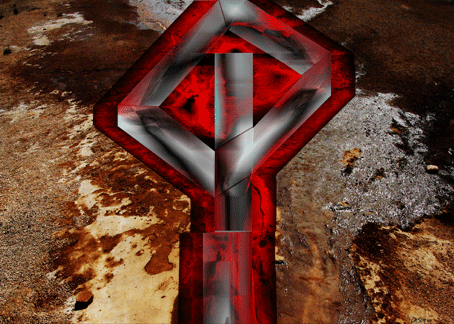
A-R-XVIII from the series "Runen"
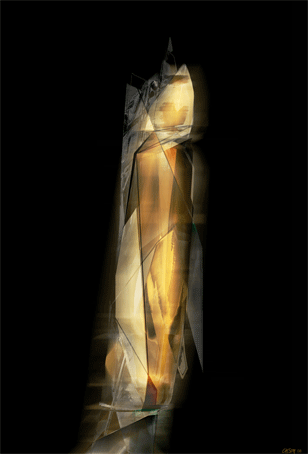
A-BA-Ch 66 from the series "Chaconne"

A-strings-14 from the series "Strings"
Christian Schütz "Zeichen - Gestalt"
March 9th - May 9th, 2010
Christian Schütz, born 1941 in Berlin, driven between East and West, is a convinced and spirited anti-ideologist. His confidence belongs to the art and the sciences as a realm of possibilities. In the set of "STRINGS" for example - a thematically extensive, wide-ranged image-complex - the artist, well trained in logic and semiotics, attempts to visualize the psychodynamics of tones in basis and core. The methods applied are closely related to the process of musical composition and mathematics. His special reference to music is expressed in the image sequence "BA-Ch" - Figurines after the Chaconne by J.S. Bach. In the work cycle "RUNES" - the third complex of digital works presented at the apb - Christian Schütz investigates, beyond the political and ideological burdens of these characters by the Nazis, to explore their ur-mental nature and graphical shape. He relates the characters to naturalistic (Iceland) and social (Parliament) phenomena. Christian Schütz, highly experienced in graphic art, painting and experimental film, has started involving the computer in his artistic process in 1996, following an intensive cooperation with the Korean composer Ye Sook Lee in the U.S. who composed electronic music after his graphic image cycle "The Wanderer". Since then the computer has become his ideal medium and external device, through which he can bring complex thoughts to live. After exhibitions in Montreal and Copenhagen Christian Schütz is currently preparing further exhibitions in Berlin (Galerie Hartmut van Riesen at the Hilton - May 2010) and at the "Museum Ludwig" in St. Petersburg in 2011.
CHACONNE
The Chaconne is an old Baroque dance in which a constantly repeated short harmonic progression in the bass offers a compositional outline for countless variations, figurations and melodic inventions and therefore is able to display a wide diversity of technical and emotional expressions.
One of the best known and most masterful examples of the chaconne is the final movement from the Violin Partita in D minor by Johann Sebastian Bach considered a pinnacle of the solo violin repertoire and among the most difficult pieces to play for that instrument.
In the 30 variations Bach has created a volume of expression that is beyond any verbal interpretation. But a musical dialogue is audible, divergent and again occasionally overturning to convergence. Albert Schweitzer describes theses poles as the "struggle between pain and joy" - hence between disharmony and harmony.
The dialectic between the strict and demanding architecture on one side and highly emotional originality on the other is the essence of absolute art in the music by Bach. The image sequence "BA-Ch" searches for an idiographic translation of these dialectical elements in Bach's music. The principle of variation has been maintained.
RUNES
The creation of inscriptions reflects the mental desire of man to order his perceptible environment in its complexity through symbols. This desire roots in the cultural evolution of man.
Rune (New High German), runo (Proto-Germanic), Rùn (Old Norse), run (Anglo-Saxon), runa (Old High German), rûne (Middle High German) - means SECRET.
ORIGIN AND RANGE
About the origin and the development of the Runes during the history of civilization we know very little. At the beginning they evidently belonged to a group of pictographic character complexes, which have been developed during different time periods all over the world. Runic characters are regarded as the oldest German Scriptures.
FORM AND AESTHETICS
Runes used to be inscriptions carved into beech wood. Therefore round shapes were impossible. The angular shape is a typical indication for the early creation of inscriptions carved into wood, stone or metal. Only when papyrus was introduced as carrier of writings the shape of letters has changed.
MEANING
It is believed that Runes first represented graphical figures. As such, they described objects, animals and concepts (nature-, mental- and religious conditions). Already the earliest archaeological discovery (bronze helmet from Nagau, 2nd century b.D.) shows a fully developed system of characters. As a written language (phonetic script) Runes were developed very late and only for a short period of time, until they were replaced by the introduction of the Latin alphabet in the process of Christianisation in the 12th century. Even the Vikings (8 to 11 century), in their time robbers, conquerors and lords of the seas, have rarely used Runes as written language.
RUNES - MAGICAL SIGNS
In fact Runes were used in the whole northern European region over centuries as magical signs or symbols - as the language of the gods. According to legend, Odin himself (king of the gods in Northern mythology and religion) received the Runes from a higher power when he hung from the world-tree, Yggdrasil, for nine days and nights, in order to pass them on to man (after Poetic Edda). Runes as magic signs included number symbolism and have mystical, demonic and religious meanings. As those Runes were not determined signs but interpreted complex and many-layered. Only a few knew about the art of interpretation: master of runes and women of higher rank. Today we are able to read runic text, but its sense resides in the dark. Remarkable is the expressive and deep mental nature of the Runes.
STRINGS
In the set of "STRINGS", a thematically extensive, wide-ranged image-complex, the artist, well trained in logic and semiotics, attempts to visualize the psychodynamics of tones in basis and core. The methods applied are closely related to the process of musical composition and mathematics.

